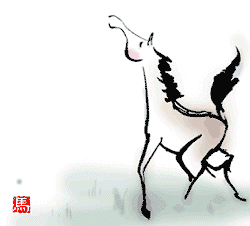the "kite runner"s

I meant the 2003 best-selling novel and the recent film, of course.
Did not want a picturesque movie image that was plastered all over the web, and found the cheerful cartoon boy.
This is a reading note long overdue. With Hoseinni's second book lying on my cabinet with cover turned, I was afraid that my words for "Kite Runner" and its movie adaptation would decay to epsilon and overwhelmed by the new readings if I don't put something down now.
Both are beautiful. But maybe I saw the film when I was at ~20% down the book and I knew almost nothing about Afghan or central-Asian culture, I felt that many important cues were missing from the brief visual account. For example, what is different being a Pashtun or a Hazara, why are kite-running important, the backgrounds and culture that lies behind to answer "why" for the happenings. I enjoyed both presentations, nonetheless, and much more for the book for its simple language and authentic Afghan narratives. Borrowing a literary cliche from my old chinese textbooks: most characters (except Amir) are flat in the film, but they are three-dimensional in the book. They laugh, they cry, they think, ... and you are with them there.
On the other hand, this book, together with "China Road" mentioned earlier and the Iranian film Persepolis, gave me a fresh angle towards nationalism, globalization vs separatism ... but that would be the topic of another post.

